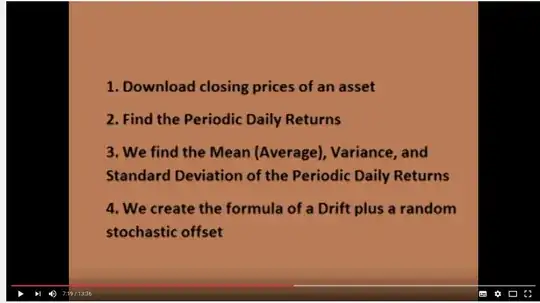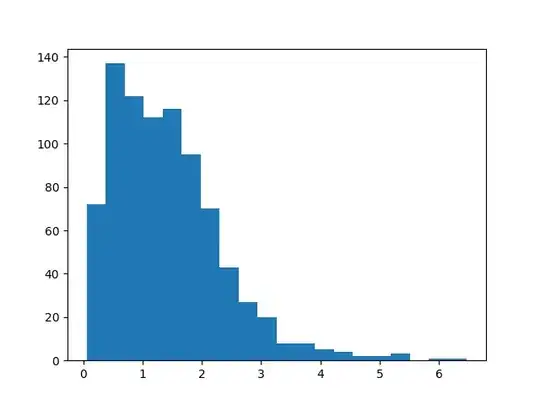correlation is computed from covariance so how come covariance can pick up non-linear relationships between variables $X$ and $Y$ but (Pearson's) correlation can't?
-
1I disagree. Pearson correlation can pick up on nonlinear relationships. – Dave Aug 20 '20 at 18:45
-
1are you confusing Pearson correlation for Spearman correlation – develarist Aug 20 '20 at 18:52
-
1Nope. Consider points hugging the right side of a parabola. Pearson correlation will be weaker than Spearman correlation, but Pearson will pick up on that relationship. – Dave Aug 20 '20 at 18:53
-
why do textbooks all say pearson correlation measures linear dependence only – develarist Aug 20 '20 at 18:54
-
1I did not quite understand your question. However, if I did, than this https://stats.stackexchange.com/q/229667/3277 might be of interest to you. – ttnphns Aug 20 '20 at 19:23
-
even there, the non-linearity question wasn't answered but thanks – develarist Aug 20 '20 at 19:30
1 Answers
Covariance and correlation (which is simply scaled covariance) only pick up linear relationships, but this does not mean that a linear relationships only exists if a variable is a linear transformation of another variable.
Strictly speaking, a linear relationship is a relationship of direct proportionality: any given change in an independent variable $x$ will always produce a corresponding change in the dependent variable $y$ , e.g. a 10 percent increase or decrease in $x$ will result in a 10 percent increase or decreas in $y$, that is $y$ is a linear (more technically: affine) transformation of $x$, $y=a+bx$.
This is a perfect linear relationship, for example:
> x <- 1:10
> y <- 3 + 2*x
> cor(x,y)
[1] 1
However, there is some linear relationship, or linear dependance, when increasing or decreasing one variable will cause a corresponding increase or decrease in the other variable, even if $y$ is not a linear transformation of $x$, for example:
> x <- 1:10
> y <- 3 + 2*x^2
> cor(x,y)
[1] 0.9745586
Notice that correlation is less than one because the linear relationship is not perfect.
There is a linear relationship even if $y$ will tend to increase when $x$ increases, but can occasionally decrease when $x$ increases, for example:
> x <- 1:100
> y <- x + tan(x)
> cor(x,y)
[1] 0.7940153
There is no linear relationship if $y$ can equally increase or decrease when $x$ increases (or decreases), for example:
> x <- -10:10 # x is increasing
> y <- x^2 # y is decreasing when x < 0, then increasing
> cor(x,y)
[1] 0
> cov(x,y)
[1] 0
As you can see, when there is no linear relationship, both correlation and covariance are null.
- 5,628
- 2
- 11
- 27
-
1`Covariance and correlation (which is simply scaled covariance) only pick up linear relationships` I don't agree with this, as I've argued in my answer linked in the comments above. Covariance, unlike correlation, is not a coefficient measuring, by the magnitude of its value, just the strength of linear relationship. – ttnphns Aug 20 '20 at 21:30
-
1@ttnphns You are right (covariance is not _a measure_ of the magnitude of linear relationship) but Richard Hardy and Peter Flom (https://stats.stackexchange.com/questions/229667/difference-between-correlation-and-covariance-is-covariance-only-useful-if-the) are not wrong: both correlation and covariance are zero if there is no linear relationship, are not zero if there is linear relationship, so both pick up linear relationships. – Sergio Aug 21 '20 at 05:56
-
wonder why the first guy who commented said covariance can detect non-linearity – develarist Aug 22 '20 at 21:23


